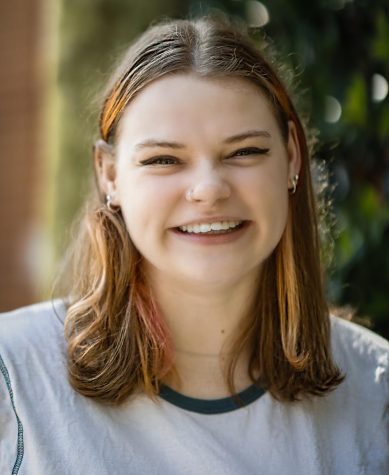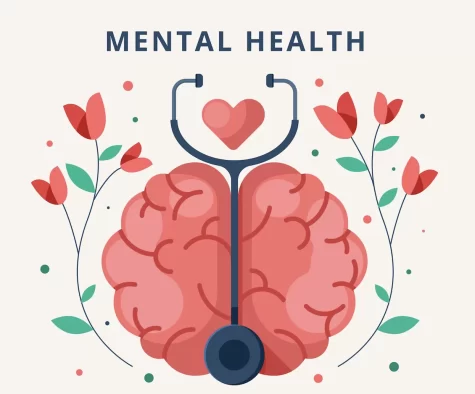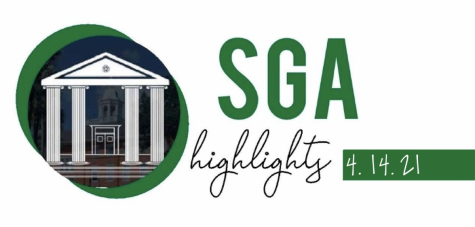Stetson’s Fall 2021: A Possible Return to Normalcy
As things slowly begin to return to some sense of normalcy, the university has decided to return to an in-person experience for Fall 2021. But what exactly does this entail?
Amid the Coronavirus pandemic, the world has seen a multitude of drastic changes. As a microcosm of society, Stetson University has undergone quite a few changes as well in the past academic year. However, with the release of an email by Provost Noel Painter on March 10, it appears that more changes are yet to come—changes that may provide a sense of normalcy as the university heads in a positive direction.
In an email sent out to the Stetson community on planning for Fall 2021, Executive Vice President and Provost Noel Painter, Ph.D., stated that, “With the strongly positive directional changes identified above, and recognizing the successes of Stetson’s mitigation efforts thus far, we [the university] feel confident in planning for a largely in-person educational experience for fall 2021.”
In planning for this in-personal educational experience that the Stetson community has missed so greatly in the past year, Painter outlined the steps that were put in place in establishing the fall 2021 semester plans. Beyond taking into consideration the results of the Fall 2021 Academic Calendar and Daily Schedule Survey sent out via email on March 1, as well as taking into account news sources and data from other public and private universities and colleges and their decisions, they also engaged with various facets of the university in order to reach their decisions.
According to Painter, these initial decisions were made largely by incorporating input from the Academic Affairs Committee and the Faculty Senate in regards to the calendar and class schedule, and collaboration also occurred with members of the Safer Stetson Task Force and the five academic deans of the university. Additionally, the Operations team—which according to Painter is the “university’s decision making body when it comes to COVID related changes” consisting of the president, vice presidents, athletic director, and the Dean of the College of Law— were taken into account.
Painter explained that decisions are being made with the information currently available regarding things like cases and vaccine availability. Perhaps the most important driving factor of the announced changes has to do with vaccines and what this may look like on campus.
“We’ve got vaccines, and President [Biden] is telling us that we’re going to have availability for all Americans, by some point in May. We’ve got declining rates rather than increasing or stable rates. We’ve got more people saying that they’re going to get the vaccination,” said Painter.
With the increase of vaccine availability throughout the state and country, this begs the question of what vaccination expectations may look like on campus that would allow us to return to some sense of normalcy as is currently planned. According to Lynn Schoenberg, Ed.S., Dean of Students and Co-Chair of the Safer Stetson Campus Task Force, “vaccination for COVID-19 for the fall is highly encouraged for our community but not mandatory. So, we firmly believe it’s in our community’s best interest for everyone who can get vaccinated to do it, and to do it as fast as they’re able based on the guidelines.”
Schoenberg explained that vaccines won’t be mandatory for a few reasons: “The vaccines are still only authorized under an emergency FDA use; the ACHA/CDC/ DOH and the state of Florida do not recommend mandating the vaccine for any population groups at this time and there are still vaccine availability concerns,” she said.
In an effort to vaccinate as many members of the community as possible, vaccination events have also begun to be held on campus. Priority groups have been established by the university and students and faculty in these groups have been able to register for an appointment to get the Moderna vaccine. After all appointments are filled, a waitlist is then used to gauge the additional vaccination demand. The Safer Stetson Task Force and the university have also provided buses to vaccination sites around the area. Through these measures, as well as the hope that students will continue to get vaccinated at home during the summer, the number of vaccinations will begin to populate on the COVID dashboard of the Safer Stetson website because as Schoenberg points out, “that number will be really, really important for switching tiers… and for knowing what we can do as a community.”
Savannah Rheingold (‘22) has already been vaccinated and hopes that others who are able to do so will follow in her footsteps. “I would like for it to be mandatory [to be vaccinated] next semester. However, I understand if it’s not, because there’s some religious reasons… [and] other reasons… [such as] allergies,” she explained.
With the increase in information regarding vaccines, the university feels confident in holding mainly in-person classes with required face coverings and only three feet of social distancing between students is in accordance with new CDC guidelines regarding schools. The amount of hybrid and online classes will be limited in number as it’s expected that the reduced social distancing will restore capacity in the classroom that closely matches that of pre-pandemic. Painter stated in his email that the “core educational experience is borne out through relationships, and those are formed most powerfully in-person and on campus.”
“This is in the best interest of the community. Safety is not the only factor. Safety is an important factor. Learning is a really important factor for me… I do believe that the changes that we’re making are within the safety guidelines that have guided us this entire time. And I believe strongly that we’re moving us to a position where the learning outcomes for the students are going to be met as best we can,” he said.
With this in mind, the modality of a class will be based mostly on accommodation, which the university has used to describe a medical situation, rather than adjustment, which has been used to describe what a person is comfortable with. According to Painter, “So for students and staff and faculty, we’re moving to a situation in the fall, where that latitude is not as broad… Where it’s not about one’s comfort, because we feel like the availability of the vaccine changes the situation.”
Painter expressed his confidence in the mitigation of the university so far and the positive direction of vaccinations as a driving reason for this transition back to an in-person modality for classes: “We feel like the mitigation efforts that we’ve put in place so far, with everybody wearing masks, the cleaning that we’ve done, the additional equipment that we have those big boxes that are cleaning the air in the big rooms around our campus, that’s proven to be really quite effective. We still have not one single example of the transmission of the virus in a classroom at Stetson, or even one single example of the transmission of the virus in a classroom in any independent college in Florida— not one,” Painter said.
Ultimately, this will most greatly impact faculty and students who have been most directly affected by the past year spent in an online format. “I feel perfectly safe being in classes,” said Logan Flynn (‘24). Similarly, Savannah Rheingold is looking forward to returning to mostly in person classes: “I think students are really looking forward to having in-person classes next semester… I think it’ll help campus vibrancy.”
As always, there are contingency plans in place. If need be, the university will restore the 6 feet social distancing rule and there are already plans to turn several spaces into classrooms, as well as increase the use of tents to hold class.
In addition to feeling confident in planning for a largely in-person educational experience, the school has announced a variety of other changes for the next academic year. Resident halls, apartments, and catalyst houses will return to double occupancy next semester. However, students are hesitant about returning to full occupancy.
“It’s best to play it safe. I mean obviously the school needs to make money to run properly so I understand why they’re doing double occupancy. I think for the most part things will hopefully die down by next semester, but if they wanted to keep it as safe as this semester, I don’t see why they wouldn’t do single occupancy,” Flynn explained.
Rheingold mirrored Logan’s opinion: “Personally, I don’t believe it’s in the best interest of students for there to be double occupancy… I’m very unsure about it.”
The decision was also made for next academic year to include a fall break (which will be two days long), a Thanksgiving holiday, and on campus classes with exams in December. According to Painter, “There were a lot of people who are saying, especially students, who are saying, ‘we just can’t do this anymore, without having breaks in the semester. It’s too much.’ And I think that a number of faculty felt the same way.” The Academic Affairs Committee and Faculty Senate also decided that a “normal” class schedule will be implemented in the next semester with 10-15 minutes between classes instead of 30 minutes between classes that has been used this semester.
According to Schoenberg, there will be a major redrafting of the tier system over the course of the summer. As she explains, “We’re intentionally waiting until the summer because things are changing so fast right now in terms of medical information, and the CDC just came out with completely new guidance for people who are vaccinated, which is wonderful, and will definitely change some of what we have for the more advanced tiers. So we decided to wait because it’s changing so quickly. We didn’t want to make a bunch of changes and confuse people and then have to change it again,” said Schoenberg. “We’ll still have the tiers, but they will look different. And we’ll make sure we communicate that really well.” Overall, she believes “there’s a lot of things that we’re moving towards in terms of leniency for the fall.”
The changes that are to be implemented into the next academic year are set in stone unless drastic changes are called for, and the university has already planned to evaluate the state of the situation at various points during the summer. These changes should help return the Stetson University population to a sense of normalcy in a time that can be described as anything but normal.
Lynn Schoenberg reminds the Stetson community that as things slowly become normal again, the university “[does] have to ask the Stetson community to remain on top of things… we don’t want to mess up what we have going on right now…So we just continue to ask for everybody’s help to try to make this happen. Because it requires everyone and we’re so thankful for everyone doing everything they have. And just a reminder that we want to stay on that train.”







